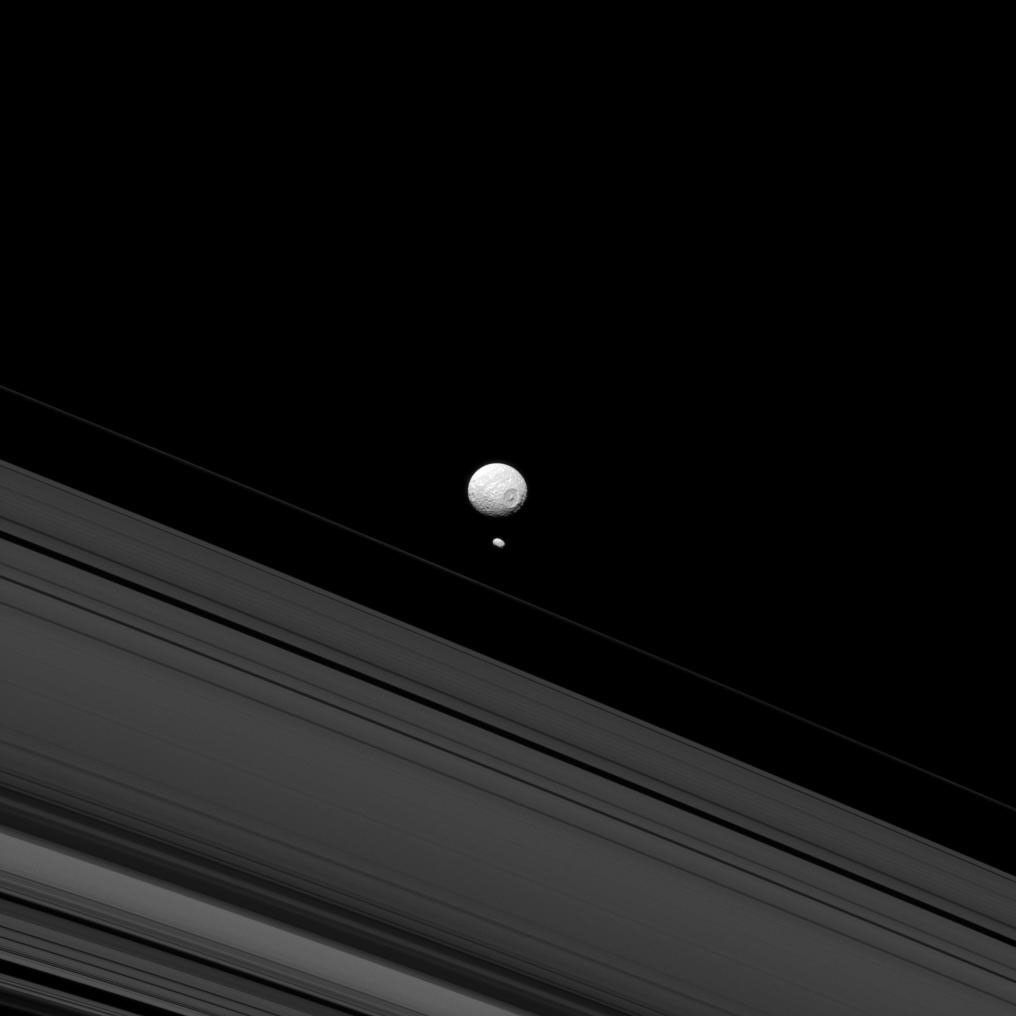Two Moons Passing in the Night
| PIA Number | PIA17120 |
|---|---|
| Language |
|
Mimas and Pandora remind us of how different they are when they appear together as in this Cassini spacecraft image. Although they are both moons of Saturn, Pandora's small size means that it lacks sufficient gravity to pull itself into a round shape like its larger sibling, Mimas.
Researchers believe that the elongated shape of Pandora (50 miles, or 81 kilometers across) may hold clues to how it and other moons near the rings formed.
This view looks toward the anti-Saturn hemisphere of Mimas (246 miles, or 396 kilometers across). North on Mimas is up and rotated 28 degrees to the right. The image was taken in blue light with the Cassini spacecraft narrow-angle camera on May 14, 2013.
The view was acquired at a distance of approximately 690,000 miles (1.1 million kilometers) from Mimas. Image scale is 4 miles (7 kilometers) per pixel. Pandora was at a distance of 731,000 miles (1.2 million kilometers) when this image was taken. Image scale on Pandora is 4 miles (7 kilometers) per pixel.
The Cassini-Huygens mission is a cooperative project of NASA, the European Space Agency and the Italian Space Agency. The Jet Propulsion Laboratory, a division of the California Institute of Technology in Pasadena, manages the mission for NASA's Science Mission Directorate in Washington. The Cassini orbiter and its two onboard cameras were designed, developed and assembled at JPL. The imaging team is based at the Space Science Institute, Boulder, Colo.
For more information about the Cassini-Huygens mission visit http://saturn.jpl.nasa.gov or http://www.nasa.gov/cassini . The Cassini imaging team homepage is at http://ciclops.org .
Credit: NASA/JPL-Caltech/Space Science Institute

























